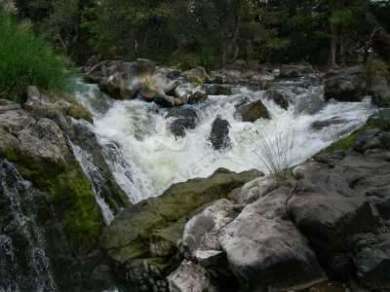It is the middle of September and the rains have let Jowalagiri village down. Again. As I sit on a rock and watch the sunset in a clear sky, shorn of any harbingers of rain, I recognise that the pied crested cuckoo – a traditional rain man – is hovering somewhere nearby and his melancholic call lets me know that he is as let down as I am. Year 4 of the drought.
In early August, there were a couple of showers that instilled hope and thinly covered the beds of the numerous water bodies, but now the lakes and tanks are getting drier by the day and, if there is no rain in the next ten days, much of the ragi crop, alongside which double beans (avarikkai) has been planted, will be lost and it will be back to the now-familiar debt trap for many.
The richer farmers are clearly better off, of course. They are using their capital to pump up groundwater, which itself is a capital asset, being non-replishable in a lifetime, to grow vegetables – tomatoes and beans largely – and flowers, all of which consume large quantities of water, pesticide and fertilisers. Even as I yearn to speak with them and ask them to shift to crops more benign to the Earth, am I entitled to do so?
As I sit there watching the sunset, I think of why, despite the thousand of crores that the Government of India and the states have spent on bringing water to agriculture, there is no water security for the majority of our agriculturists, who are dependant on rain and unlikely to get loans from banks to dig borewells. I am not talking of the money that was eaten away, though that sum is outrageous in itself. For the huge actual amounts that we have spent on the construction of numerous irrigation dams across India with their intricate water diversion network, what do we have to say to the poorest farmers who do not live by the canals downstream of the dam? “Sorry, we have nothing left for you”, or “get off the land and move to the city” or “Bad luck, buddy, wrong choice of land”?
And, as I sit there, I think of hundreds of farmers around me who are pushing their children out of farming and into India’s cities, not because there are no buyers, not because technology has not evolved, not because they can’t access genetically modified crops or prices of agri produce on the internet, not because there is no land. Simply because there is no water. Jowalagiri is not an exception; the entire district of Krishnagiri and, indeed, much of agrarian India this year is staring at a water crisis.
This is not just a failure of the monsoon, this is a failure of Government policy; an abiding and wretching visual to monumental folly. We cannot stop an El Nino and can do precious little about the cards we are dealt. But the Government could have, using its vast resources of money and manpower, harvested the rain that fell across much of the drier areas of the country, with a fraction of the expenditure incurred on large irrigation projects, using traditional wisdom from the many generations before us that did this successfully, combined with modern science, examplified by the images beamed by satellites.
Yet, over the years, not only have successive Governments not encouraged India’s farmers to store this water in traditional structures and tanks, they have actually discouraged such behaviour through the creation of laws that took common lands (including lakes and tanks) away from the people, perverse incentives such as free power to draw water from borewells and higher prices for rice and not millets (that are more water-frugal), and encouraging the cultivation of sugarcane along water courses. They have emphasised independency and competition, rather than inter-dependency and collaboration which has, across the history of farming, been the key to sustainability.
India’s complex water policy has bestowed on the power-wielders of pre- and post-independent India the ability to amass, control and direct large amounts of river water along channels of bias and preference, all funded by (often) well-meaning but hopelessly inept aid organisations such as the World Bank. It is a policy that divides Indian agrarian society of about 600 million people into two gigantic halves – those with access to water, and those without –engendering conflict, speculation in land and the exodus of ecological refugees across the vast land mass.
Across India, there are pitifully few examples of Government-backed decentralised water harvesting, just as indeed there are hardly any examples of courses run in India’s mainstream universities – that trains to-be engineers – on the science of traditional water management, pond-based agriculture and preserving watersheds using local knowledge and advanced science in collaborative partnership.
As I sit there watching the sunset, it’s impossible to not pine for what we have lost. Even as demography specialists warn that India’s growing population and the Food Security Act demand more grain and higher buffer stocks, India’s ancient profession of farming is dying principally due to the lack of good water policy, left behind in the dust bowl of an economic whirlwind. The feeling that arises within is one of anger. How can large numbers of intelligent humans create policies so stupid that reward what is wrong and punish what is the right thing to do?

